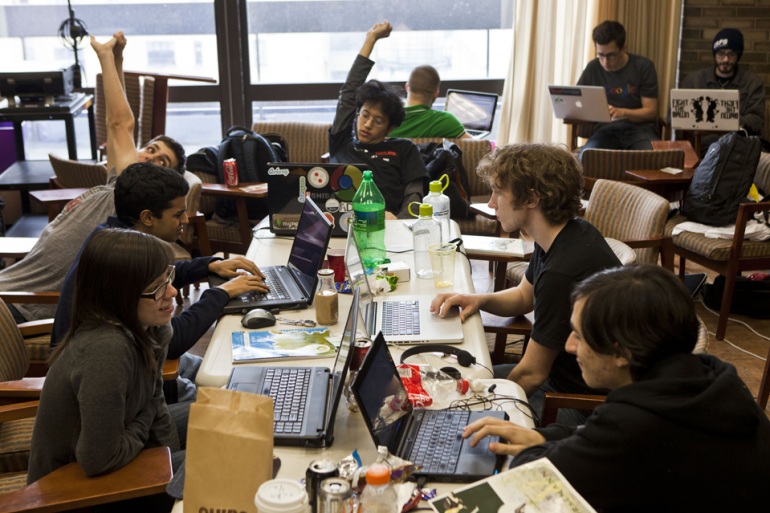Kickstarting Australia's digital future
Over a two-day period in April 2013, Tourism Australia received 35,000 user-generated video submissions to its ‘Best Jobs in the world’ campaign. The promotion, which offered a salary of $100,000 for jobs such as NSW Chief Funster and WA Taste Master, was a hugely successful follow up to a similar global award-winning campaign by Tourism Queensland that targeted youth travellers and working holiday makers. By the end of the campaign, Tourism Australia had received 620,000 entries from 196 countries and gained potentially tens of millions of free marketing when its Facebook user base grew from 150,000 to over 500,000.
The videos were viewed in almost every country in the world, shared millions of times over by the digitally-native travelers Tourism Australia was hoping to entice to our shores.
For chief information officer Dave Rumsey, it was an emphatic proof point of the benefits of collaboration between the marketing and technology teams.
When Rumsey joined Tourism Australia in November 2011, that relationship was quite different. The organisation was undergoing a transformation from traditional campaign-driven marketing to one focused on telling stories through digital channels, but the culture hadn't moved with the strategy.
The relationship between the technology team and marketing was testy, so Dave Rumsey made it a priority to build a bridge between his and chief marketing officer Nick Baker's team.
“I was pretty upfront about this idea that we needed to trust each other,” Rumsey says. “My role wasn't to say what could or couldn't be done. It was really to be a part of the team. And that was a different way of thinking.”
Nick Baker was immediately on board.
“In the beginning it was about a shared vision,” Baker says. “The use of technology in a lot of organisations today is about marketing and connecting with the consumer. If we could put forward that we are going to use technology to empower us to get better and quicker and more responsive, then people kind of get that.”
Tourism Australia created steering committees and forums and invited technology staff to marketing conferences, and vice versa. Rumsey appointed a business relationship manager to walk the floor to get feedback on what was happening in the organisation. Baker brought the IT team earlier into campaign development.
Both agree that receiving those 35,000 videos in two days would not have been possible without the deep cultural change.

Tourism Australia generated thousands of applications for jobs like Queensland Park Ranger and WA Taste Maker
Tourism Australia identified cultural change early on as a key component of its digital transformation but many companies struggle with such an abstract notion.
“I don’t think a lot of companies really understand it,” says managing director at BCG Digital Ventures in Australia, Mike Priddis. “But if you make a change in the business you make a change in the culture. And if you are making organisational changes without understanding the cultural result that is likely to follow you are probably not going to get the result that you want.”
The problem, according to IBM Australia’s vice president of consulting services Will Duckworth, is that digital transformation often means taking an organisation into unchartered territory.
“In a culture where there is no mutual support, and in an uncertain economy, who is bold enough to make a big call?” Duckworth asks. “Are you going to stick your neck above the parapet and say you’re willing to fail?
“And that is a real issue, because with digital innovation you have to test things out, learn, and reinvest. And a lot of cultures don’t support that and say you need to succeed at every step.”
But time is running out.
Numerous born-on-the-web competitors have utilised tools like cloud computing, big data, social analytics and agile software development to challenge industry incumbents.
According to business consultant and former chief executive officer with National Australia Bank’s HICAPS, Simon Terry, this is forcing change on incumbents whether they like it or not.
“They know they need to do something, so the early adopters are off doing it,” Terry says. “Even the most hierarchical control-oriented organisations are experimenting with social tools and innovation labs and hackathons to try and understand how those play in their organisation.”


One of Australia’s most successful tech companies, Atlassian, uses iPad touchpoints to gauge employee engagement daily
The need to understand culture has created opportunities for new specialist consulting organisations and service providers, such as Melbourne-based start-up CultureAmp, whose survey tool Murmur is now used by global organisations, including Silicon Valley-based companies Adobe, AirBNB, Dropbox and Pinterest, to provide insight into their culture.
Cultural alignment was at the heart of the reason for the creation Culture Amp, with the firm’s three co-founders having all worked on technology transformation projects within large banks.
“Some of these places were spending $1 million a day on a tech transformation project, and you could see it wasn't going to work -- not because there was a technical problem, but because they hadn't worked out how to solve the cultural issue,” says founder Didier Elzinga.
Steve Vamos, a director of Telstra and former VP of Microsoft Australia and New Zealand, believes that constantly monitoring and shepherding cultural change is critical, something that goes against the grain of many modern corporations. He says old mindsets of being in control, not making mistakes, and always knowing the answer are no longer valid.
“They are wonderful attributes in a world that isn't changing. Those systems are deadly when it comes to things that are changing. Now we live in a networked, volatile world. So if you want to transform your organisation, you have to undo 100 years plus of industrial age conditioning.”

Hackathons are 24-48hr coding sessions where developers are given the freedom to create new products
Even so, this can be a difficult pill for managers to swallow. One method is to create a skunk works -- a separate division with a broader risk profile that has the latitude to experiment.
Executive consultant at specialist software development consultancy ThoughtWorks Leslie Barry says the skunk works division becomes a safe place for experimentation.
“You do that to attract a different culture that wants to try new things, get stuff done and get it out there faster,” Barry says. “It is about attracting smart, engaged people and giving them a space to work in. And they will almost hack their way around the existing culture of the organisation.”
However, he says it is important that the role of the skunk works be well understood within the organisation, and that mechanisms be put in place to harness the output it creates.
“You use the knowledge to invigorate the existing business,” Barry says.
“You can’t lose sight that there is an existing business. You have to bring the existing business along on the journey.”
















